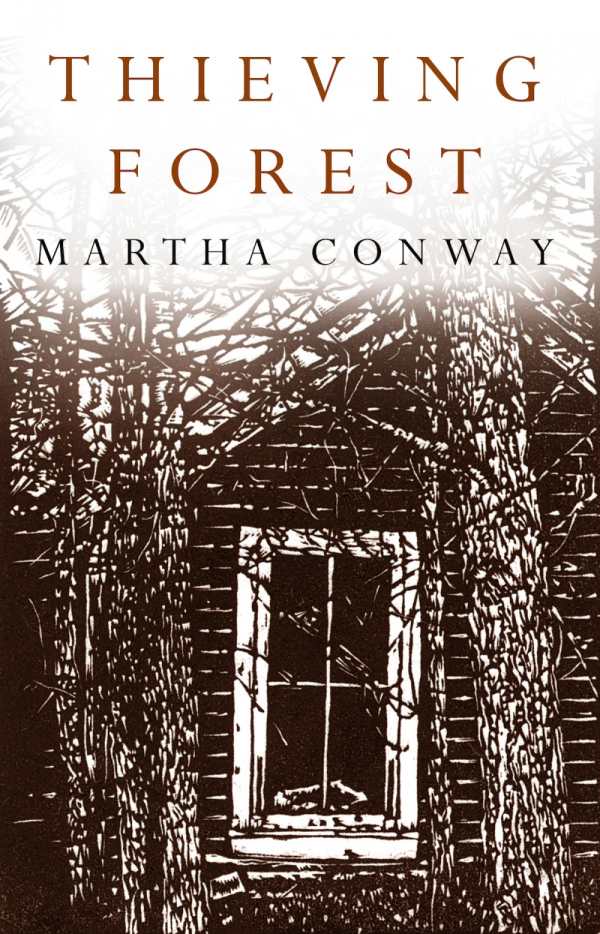Thieving Forest
- 2014 INDIES Finalist
- Finalist, Historical (Adult Fiction)
Susanna’s bravery makes her an intriguing character, and her relationships deepen the plot to present frontier life compellingly.
Thieving Forest, by Martha Conway, is a literary historical novel that follows a strong-willed young woman in a quest to rescue her kidnapped sisters. The high-caliber setting, description, and characterization create a story dripping with voice.
The story opens as seventeen-year-old Susanna and her four older sisters—“best known for their red hair and rude manners”—sit, sullen, around the cabin. Their parents recently lost to swamp fever, the question “What now?” ricochets between them. Then tragedy strikes: Potawatomi Indians kidnap the four oldest girls and disappear with them into Thieving Forest (named from stolen horses once hidden there). Susanna, with the help of some neighbors, makes the brash choice to go after them.
A brave, no-nonsense, yet intensely vulnerable character, Susanna propels the story forward—in the plot itself and through the reading experience. The sisterly dynamics, both compassionate and competitive, are relatable and familiar, even generations later, and Susanna’s friendships along the hunt dig deeper than sheer necessity, helping her learn and grow, and lending her more depth than as a stereotypical loner character.
The book is full of compelling action, but the true richness of the plot is its ideological complication: as Susanna works her way toward the pain-tinged resolution, the lines between us and them grow blurry, and her sisters struggle to comprehend the dichotomy of gentleness and violence in their new world.
Conway’s literary skill shines in the setting and time period: early 1800s in the woods of northwest Ohio. She conveys the needed historical information without being didactic. Plus, the front matter has an artfully rendered map of the area, giving a sense of scale but also a feel for the rugged landscape. The dialogue has a brusque yet friendly colloquialism, and the characters use time-period-appropriate terminology.
Conway’s descriptions are precise, atmospheric, and haunting, particularly in presenting the girls’ harsh rural reality—“The settlement as yet has no church. Graveyards are needed before churches”—and as Susanna watches the men take her sisters—“Their black mourning collars and dark dresses bleed into the color of the trees.”
The pace is quick and the suspense intense. Switching the action between Susanna and her sisters increases the tension. These strategic shift points are effective but don’t manipulate emotion with cliffhangers for cliffhangers’ sake.
This novel exemplifies the tough women, high stakes, and rugged community of frontier historical fiction.
Reviewed by
Melissa Wuske
Disclosure: This article is not an endorsement, but a review. The publisher of this book provided free copies of the book to have their book reviewed by a professional reviewer. No fee was paid by the publisher for this review. Foreword Reviews only recommends books that we love. Foreword Magazine, Inc. is disclosing this in accordance with the Federal Trade Commission’s 16 CFR, Part 255.

